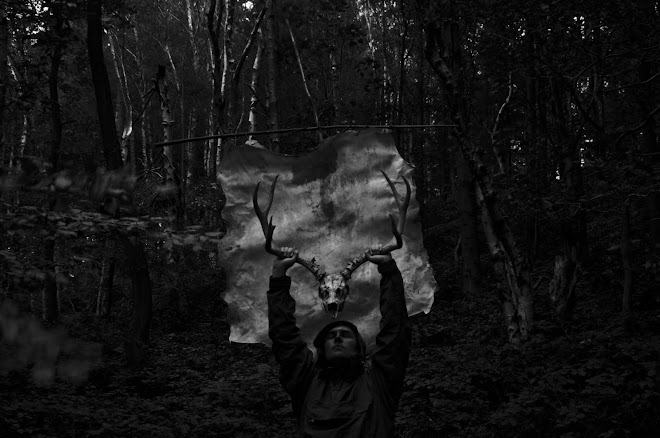skip to main |
skip to sidebar
WAP 8





Where would we be without Paul and Barbara Brown’s Prehistoric Rock Art In The Northern Dales? PRAND has become for me something of a bedside companion, never out of reach and always useful for planning trips and treks. I recently made another visit to Colsterdale in North Yorkshire and whilst in the area decided to check out the rock art site at West Agra Plantation (WAP), in the hills west of Masham.
PRAND goes to some trouble to explain that not all the sites discussed are accessible to the public because of land owners reluctance to have the great unwashed traipsing across their grouse moors but as we know, and I have said before, trespass is a civil matter not a criminal offence and they’ve got to catch you first – so, with that in mind and with enough local knowledge not to get caught I set off to look for WAP 8.
In the gazetteer included in PRAND WAP 8 is described as being inscribed on a flat slab measure 5.5 metres by 3.1metres. It is also given a ten figure grid reference but even so during my previous visit in May I was unable to find it. Sometimes this happens to me, sometimes I feel as if I find things when I need to, not when I want to. This time I walked straight up to the rock and immediately found the beautiful design of a central cup with six concentric rings linked by deep grooves. No need for head scratching, compassing gazing or measuring of steps.
In the pale light of a still autumn afternoon, with the cold of an early evening beginning to creep over the land the design was something of a loadstone pointing its way to sacred and special places. The West Agra site is itself special, comprising over a dozen panels with complex art on a south facing slope above the river Burn but for me WAP 8 is the heart of this mystery because of its special location and its simple, elegant design.
Why did people feel the need to mark this place with rock art that would last for millennia? As we know there is a wealth of ancient monuments to the east in the Vale of Mowbray, along the length of the scared river Ure and at it’s confluence with the Swale but why was this site, high in the hills, worthy of making a special effort to mark and remember. PRAND suggests the site may be connected to the Mesolithic flint working site at nearby Little Haw or possibly to the trade in Langdale axe-heads to the lands east of the hills but whilst these explanations may go someway to explain the context of human settlement and movement in the prehistoric Colsterdale I find them unsatisfactory in explaining why West Agra Plantation has so much high quality and complex rock art.
I feel that rock art is as much about the significance of the location as it is about the designs inscribed on the rocks and it is the location and it’s specific Genius Loci that hold the keys to interpreting the symbols. When one stands on the hillside at West Agra the dominant feature of the landscape is the flat topped mountain of Great Whernside to the south west. The peak stands framed in the valley of the river Burn, which draws the eye up across the moors to its summit. All the rock art at West Agra is in this line of sight, up the valley of the Burn to Great Whernside and whilst there are many hundreds of suitable millstone grit slabs along the ridge to both the east and west the artists only chose those ones that had views to the mountain.
How many hours work did it take ancient shaman-artists to mark out each cup and ring, each linear mark? Over how many years or generations was this art completed? Not in a weekend, not in the time a hunting band or a foraging party camped by a spring but over many lifetimes as people returned again and again to the place, to look up at the mountain and experience the genius of the valley. There is a tradition that is all but lost to modern people, a tradition that has echoes in the later lore of later peoples but has been overwritten and watered down with tales more suited to people who work with metal and live in one place but these panels high on the hills still point the way to their mysteries and hold the key to the secrets of an ancient British animism.







1 comment:
They're lovely pictures, thanks for sharing them.
Post a Comment